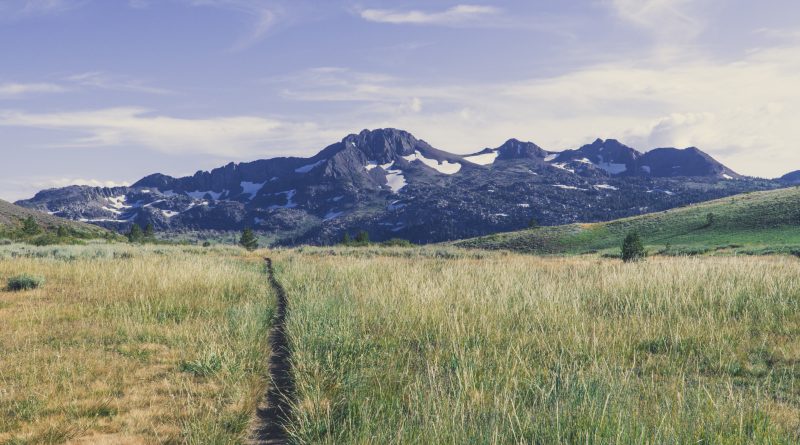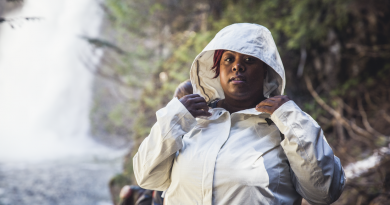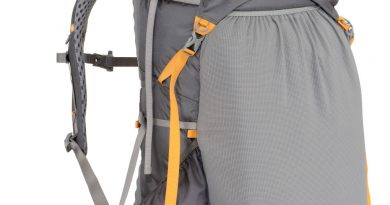The Appalachian Trail vs. Pacific Crest Trail: Which Hike Is Right for You?
Comparing custom, tools, resupply and situation.
Whether you’re deciding which footpath to form out for a first thru-hike, you’ve hiked one trudge and want to know the draw it stacks as a lot as the assorted, or you exact occupy a frequent curiosity, a fascination with comparing the Appalachian Scoot (AT) and Pacific Crest Scoot (PCT) is frequent.
Recently, as somebody who’s hiked both the AT (2011) and PCT (2017), I am in an esteemed club and can consult with their differences firsthand. This is how they stack up.*
Scoot Tradition
In all likelihood it goes without saying, but trudge custom differs on the AT and PCT. There are many reasons for this, but most likely the ideal is that the AT has historically attracted extra hikers, rendering it a extra social trudge. However, as a results of the added attention the neatly-liked unique and movie Wild the brought to the PCT, to boot to the rising reputation of thru-mountain climbing, the gap between the 2 trails looks to be closing. Right here are a number of the significant remaining differences.
Backpacking expertise: These making an attempt the AT are a long way extra most likely to be on their first lengthy-distance backpacking time out when in contrast with those taking on the PCT. Essentially in 2017, simplest three.2 p.c of AT hikers had been on a three-or-extra-month backpacking time out sooner than embarking, whereas a 1/three of PCT hikers had already hiked the AT. Which implies that, the “first day of camp” make would possibly perchance even be extra prevalent on the AT, whereas PCT hikers are most likely seeing the trudge for the foremost time, but now no longer necessarily experiencing their first lengthy hump.
Fashioned assembly components: One racy ingredient of mountain climbing the AT is the incidence of shelters. There are over 250 in entire, or one, on common, every eight miles. Many hikers raise to catch shelters their home for the evening, whether or now no longer they no doubt sleep for the length of the three-walled constructing or camp nearby. They’re also neatly-liked damage components within the center of the day for the aim of grabbing a snack, signing the register or amassing water. Unprecedented of the trudge camaraderie originates right here.
On the PCT, frequent assembly components fabricate exist, similar to streams and campsites, but because they exist in bigger numbers and most ceaselessly don’t catch for essentially the most engrossing situation to shatter, teams are less most likely to form. Total, you’re less most likely to flee into other hikers within the center of a damage or at evening on the PCT.
The Pacific Crest Scoot in Washington.
Town infrastructure: On the AT, towns are most ceaselessly nearer to the trudge and occupy catered to bigger numbers of hikers through the years. Which implies that, AT trudge towns are most ceaselessly extra accustomed to the inflow of “hiker trash” (the term thru-hikers lovingly use to consult one yet any other), and better cater to their needs. Essentially the most evident example of right here is the incidence of hostels, which catch very ideal gathering spots for hikers.
As a result of hostels are a rarity in PCT towns, hotels are essentially the most frequent off-trudge form of lodging for its hikers. Popular trudge angels exist in a handful of towns along the PCT, who will provide an identical services and products to a hostel, regardless that it’s worthy less frequent and they’ll accommodate fewer hikers. Wait instances for a hitchhike, the foremost mode of transport from trudge to town and wait on, are most ceaselessly worthy shorter on the AT when in contrast with the PCT.
Shared definition of a thru-hike: On the AT, hikers appear to undertake a extra purist definition of a thru-hike, which is to hike every and every mile of the trudge. On the PCT, due to the the likelihood of wildfires and excessive snow years, trudge closures are all but assured. For this motive, the means to hike every mile of the trudge is out of 1’s preserve a watch on. The particular definition is an ongoing (and pointless) debate, but as a frequent rule of thumb, it’s less concrete on the PCT.
The Appalachian Scoot in Virginia.
Equipment
Equipment needs between the AT and PCT are extra an identical than dissimilar. The ideal contrast is how one’s getup evolves along the trudge. Even if needs fluctuate by season on the AT, on the PCT they’re dictated largely by section.
Section versus season: The PCT is divided into five segments: Southern California (or “the desolate tract”), Central California (or “the Sierra”), Northern California, Oregon and Washington. Equipment needs can fluctuate dramatically between them. As an instance, within the desolate tract, northbound (NOBO) hikers will most likely detect days with triple-digit temperatures, fixed solar exposure and 20 miles between water sources. Per week later, as soon as reaching the Sierra, they’re strolling atop a entire lot of toes of snow at 12,000 toes.
The desolate tract can catch punishingly hot—as excessive as A hundred and ten—or freezing frigid—most ceaselessly 30 or beneath. Many hikers will exclaim a solar-protective shirt, hat, pants and gloves; a solar umbrella (optionally on the market); a sleep machine merely for at the least 20 degrees; and the means to raise as a lot as 7 liters of water. For the Sierra, in a median to above common snow year, hikers will need an ice axe and snow traction, most generally MICROspikes. Moreover, hikers are required to raise a endure canister through this half, which would possibly perchance even consequence within the need for an even bigger pack. In Northern California, a hiker’s tools will resemble their desolate tract setup, with the ideal contrast being the addition of mosquito repellent and/or dresses (including a head safe).
For Oregon, I suggest a smartphone loaded with a entire lot of podcasts and/or audiobooks (hikers most ceaselessly cite this flat, carefully forested half as essentially the most dull). Lastly, in Washington hikers need frigid-weather tools plus a rain jacket, pants and gloves for its infamous rainy season.
On the AT, the season most ceaselessly dictates tools needs. Many falsely bewitch the southern Appalachians are warmth within the heart of the spring. These hikers will most likely be in for a coarse awakening. The percentages of warding off a snow fall within the foremost few hundred miles of the trudge are now no longer in your favor. Frigid weather tools is well-known through at the least the Grayson Highlands (Southern Virginia), regardless that I on the total suggest hikers preserve onto their warmer layers and sleeping accumulate till Daleville (Central Virginia). Via-hikers can catch by with their warmth-weather tools from this point the complete manner in the course of the Mid-Atlantic states. Hikers on the total recoup their frigid-weather tools at Glencliff, New Hampshire, the half exact sooner than getting into into White Mountain Nationwide Forest.
Pacific Crest Scoot in The Sierra.
Humidity: The AT is worthy extra humid than the PCT, and consequently, the day-to-day temperature swings are milder. You would possibly perchance presumably expertise bone-chilling nights anyplace on the PCT, even supposing combating blistering warmth within the center of the afternoon. On the AT, you’re all but assured a entire lot of sweaty sleeps within the center of the summer months. For this motive, AT hikers can swap out their frigid-weather sleeping accumulate for one thing lighter within the center of the center half of the trudge (peek above). PCT hikers are urged to preserve onto their 20-stage (add or subtract insulation per your metabolic needs) accumulate or quilt in the end of the trudge.
Head right here to learn the manner to pack for the AT and right here for the PCT.
Resupply
There are two recommendations for procuring food on a thru-hike: mail drops and resupplying. The venerable requires mailing yourself food (or soliciting the support of a liked one) upfront of reaching your vacation space. The latter is so simple as procuring your grub from a grocery or comfort store when on the city. Easiest practices for either trudge use a combination of the 2, regardless that at a really varied ratio. As an instance, one would possibly perchance potentially hike everything of the AT without sending a single mail fall. While this contrivance will most likely be applied on the PCT, it’s no doubt now no longer truly helpful.
The foremost similarity between resupplying on the AT and PCT is that first rate food alternate choices exist at as regards to every town, resort and ranch on both trails. Assuming you’re willing to subsist off instantaneous mashed potatoes, ramen, peanut butter, sweet bars and trudge mix from one town to the subsequent, the means to thrill in your food accumulate with hiker-gracious fare is as regards to ubiquitous.
The Appalachian Scoot in New Hampshire.
The foremost contrast is that the establish of resupply in many spots on the PCT is mammoth. Plenty of resupply destinations on the PCT are remote and hotbeds for tourism and captive adventurists. For this motive, somebody mountain climbing on a funds would be better served sending mail drops to many areas on trudge. The sections the assign resupply are most reliable are through quite loads of the Sierra, worthy of Oregon and all of Washington. Need to it is advisable to learn extra about resupplying on the PCT, this resource will satisfy your curiosity. Resupplying on the AT is worthy extra straightforward; on the assorted hand, there are tranquil a handful of areas the assign a mail fall will most likely assign you money.
Wretchedness
“Is the AT or PCT extra complicated?” is the query I catch extra than every other from those making an attempt to know the adaptation between the trails. In brief, the respond will fluctuate reckoning on your individual experiences.
You are going to have to point to that the AT takes five to seven months to entire its 2,a hundred ninety miles, whereas the PCT rob four to six months to entire 2,650 miles of trudge. That presentations, when evaluating essentially the most evident element, terrain, the AT is without query the extra complicated of the 2 trails. Now not simplest is the PCT graded worthy extra favorably than the AT, you’ll uncover a worthy extra rugged tread with extra rocks and roots on the AT. These components consequence in a slower hasten on the AT with extra vitality exerted in a given day.
That stated, despite the simpler terrain, the PCT will most likely be perceived because the extra inspiring trudge to some. As an instance, if a denser grouping of hikers is engrossing to your form of mountain climbing or if excessive elevation, fixed warmth and solar exposure or steep slopes are parts you’re ill-geared as a lot as address, the AT would possibly perchance very successfully be the simpler selection for you.
It’s exact that most those that’ve hiked both trails will crown the AT because the extra complicated trudge. I too am in this neighborhood. But this diagnosis is worthy from unanimous.
The earlier comparison is merely the tip of the iceberg when evaluating the United States’ two most neatly-liked lengthy trails. If your curiosity stretches past this article, you are going to uncover a worthy extra good training on the trails themselves. Look you on the market!
*The above are simplest generalities. Hikers’ needs and experiences will fluctuate wildly.
All pictures courtesy of Zach Davis.
The put up The Appalachian Scoot vs. Pacific Crest Scoot: Which Hike Is Appropriate for You? regarded first on REI Co-op Journal.
Originally posted 2018-02-22 17:00:30.




